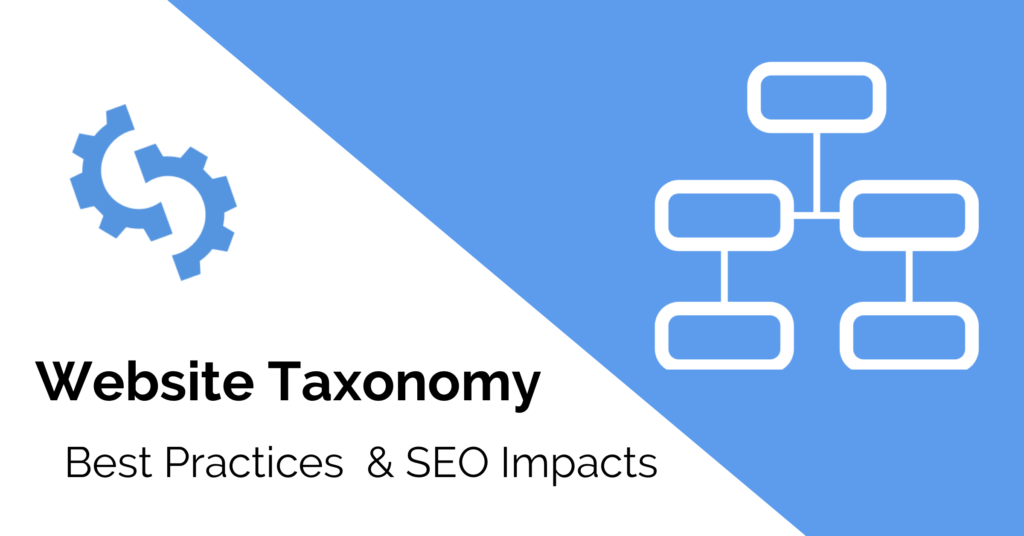Website taxonomy is one of the vital and critical aspects or SEO Services, digital marketing, and agencies. It is something that helps you to better organize your website and attracts the customers. For boosting the traffic and revenue of the website, it is essential in today’s competitive digital world. Digital marketing services providers to other companies, who have a digital presence, require it for their website.
Creating and Maintaining website taxonomy has become an essential or unavoidable factor in the marketing strategy. Let’s move on and focus on why digital marketing services providers and other expert companies give that much attention to improving their marketing strategy.
For the website architecture, URL taxonomy is a big factor. Do you aware of the term website taxonomy or URL taxonomy? If no, then don’t worry, here you would get to know everything about it. Let’s start with-

What is website taxonomy?
The term Taxonomy means the classification of something. This concept is used well by search engines for the classification of information. A website taxonomy is processed in which the site organizes content. Also, the site classifies its pages. Website taxonomy is one of the most vital aspects of digital marketing as well as search engine optimization efforts.
If you avail of the digital marketing services company, then you would analyze how much focus that agency is putting for the perfect taxonomy.
Importance of clear taxonomy
Whether it is searching, asking, browsing and any other mean, your content should be findable. That’s why it is of the utmost vital to create and maintain clear taxonomy.
Advantages of Website taxonomy-
Ideal to improve the search experience
Taxonomy is great to improve the search engine experience and hence results in a good rank of the website. Website taxonomy plays a big role in improving the experience of users on the website. For the growth of any website small or big, it is essential to provide a good search experience. A good search experience helps improve.
Taxonomy is good for communication
Well-strategized website taxonomy is ideal for improving communication with the customers. The reason for it is that when a well-planed taxonomy packs the information in such a way that meets customers’ expectations. This helps boost the return on investment via SEO find-ability, content discovery, online marketing, eCommerce, and user self-service.
Easy to present related content to the site visitors
There are numerous ways by which one can arrange the content on the website. But with the site taxonomy, it is ideal to arrange content in such a manner that content is organized by types, news, videos, topics, and others along with the representation of the related content. It enhances the searchability of the site. It is a powerful method for presenting related content to readers.
It is helpful to connect readers with their interest
Website taxonomy works best when it’s about to connect the people with their interest. Let’s understand it with an example-If a customer visits your website in search of the finding a product.
With the help of taxonomy, you would offer that particular product to his/her along with he/she can find the various information and links on your website.
Such as that is related to the product such as how to use that product, benefits of using that, how long it will serve, which design of that product is trending and so many other information. This user will impress because he/she gets useful information.
Types of taxonomy
There is a misconception of the people that a site has only a hierarchical structure but it is not true. There are 4 types of taxonomy and you can choose any of them as per your website demand. Let’s know these kinds of website taxonomy in detail.
1. Flat taxonomy
2. Hierarchical taxonomy
3. Network taxonomy
4. Facet taxonomy
Flat taxonomy
Flat taxonomy is also called un-layer taxonomy that is simply the list of the items. In it, the website has items of the same weight. To highlight the most important part of this kind of site taxonomy, you can put it first on the list.
https://www.progress.com/documentation/sitefinity-cms/sf-images/default-source/developers-guide/flattaxonomy.png?sfvrsn=0
Flat taxonomy is ideal for small websites and it gives a user-friendly look to the site.
Most of the digital marketing experts and professional SEO services providers think that it is not a great practice to put content in a single line. For an attractive and easier way, it is better to split the content into a different section. This is the reason maybe it is a less used taxonomy for the website.
Hierarchical taxonomy
Represented as a flowchart or tree, this is the most famous website taxonomy. In this type of taxonomy, every item is arranged according to the importance. As the website hierarchy expands, it means the category of content is increasing.
https://marketingland.com/wp-content/ml-loads/2015/05/hierarchy-taxonomy.png
Network taxonomy
In website network taxonomy, categories are linked to other categories. Also, the relation between items can have different meanings. It lies under both associative and hierarchical categories.
https://marketingland.com/wp-content/ml-loads/2015/05/network-taxonomy.png
Facet Taxonomy
In site facet taxonomy, items or content is assigned to sets of the attribute. Here classification can be done in several ways.
https://marketingland.com/wp-content/ml-loads/2015/05/facet-taxonomy.png
Best practices for URL or website taxonomy
Let’s have a glance at the tips to create a taxonomy for your site-
- Know your audience
- Use and share an ideal and unify taxonomy in the whole site
- Understand your customer language and apply relevant language for each audience
- Add and update new services and products with time i.e. permit for extensibility
- Be precise with size and try to reduce it because complex taxonomy can hurt findability.
- Be sure that your taxonomy should support site navigation, integration, search, and other online business apps.
